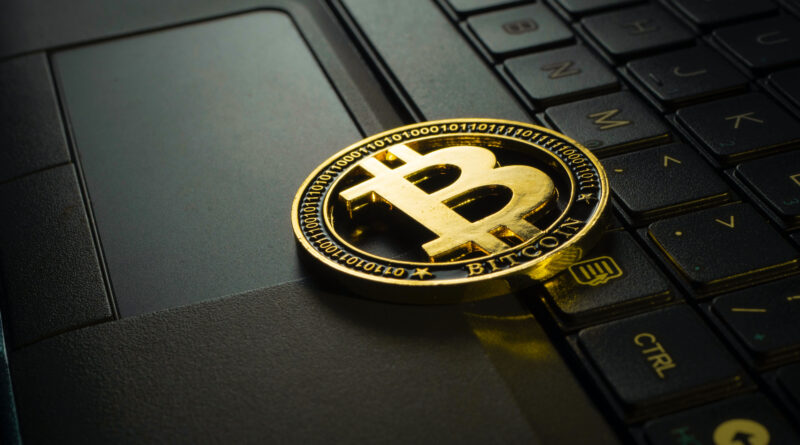Blockchain Revolution: Get To Know Next Revolution-Blockchain
Blockchain Revolution: Four years after the incident, entrepreneur Gadi Roshin does not know who the thief who came to the port emptied the container sent to Israel by the Chinese company he represented in his previous professional incarnation as an international trader. A customer who purchased goods from a Chinese supplier represented by Rochin went bankrupt, and he looked for another buyer. When he arrived at the port to inspect the goods, an empty container was surprisingly waiting for him. It turned out that the goods were stolen by officials who arrived at the port and presented forged ownership documents. The insurance company broke its head for four years to locate the thieves. Failing that, she had to pay.
Such incidents result from the astonishing fact that even today, decades after the entry of computers into every field in economics and commerce, paper documents are still the central medium on which international trade is based. Fraud and delays in the arrival of documents are further ill. The result is damages estimated at hundreds of billions of dollars. “The direct cost of using the paper is estimated at $ 30 billion a year,” Rochin told TheMarker magazine, “while the indirect damages, including the loss of sales days due to delayed goods at the port, amount to about $ 420 billion a year.”
Coincidentally, more or less, when the container was stolen, Rochin was exposed to the new and exciting world of the computerized currency Bitcoin and the “blockchain” technology on which it is based. This new technology offers an alternative to traditional payment mechanisms and the institutions that manage them. It also allows funds to be transferred and stored in an encrypted system without any central supervisory body. The discovery led Roshin and his partners, Yair Sapir and Or Garbash, to establish the startup Wave, which was designed to bring the digital revolution to the world of maritime trade. In a few months, Rochin says, the trial phase of Wave’s product will begin in partnership with Global Barclays Bank, an international forwarder and shipping company that will issue a bill of lading.
Barclays’ vice president for blockchain, Simon Taylor, has been optimistic about the chances that blockchain is the digital answer to the familiar paper system. “A blockchain may do that, and it will be proven one way or another in about a year,” Taylor said last October in an interview with Finextra.
Unbreakable
Like Bitcoin, Blockchain Revolution technology is the product of the development of an anonymous programmer (and maybe a programmer or a group of people), known only by the code name “Satoshi Nakamoto.” Although scholarly assessments of his identity emerge from time to time, no one still knows who the person behind the fake nickname is. Nakamoto sought to develop a digital version of money. It could use to make peer-to-peer (P2P) transactions without the need for any external entity.

The necessity of such a third party in transactions made in traditional currencies stems from the fact that every transaction must involve somebody that all the parties involved in the transaction trust. In cash transactions, this body is the state’s central bank, which guarantees the value of banknotes and coins. In larger transactions, the banks keep the books of records in which it is written by whom a certain amount of money is at any given moment. All the operations performed with the funds are also recorded.
There is no third party in digital payment systems using the peer-to-peer method. Hence, a technological mechanism is required that will fulfill the role played by the banks, provide a reliable registration of the money in the system and prevent fraud. A Blockchain Revolution is just such a mechanism: it is a digital log kept simultaneously on the computers of all network users and contained all the information about the accounts and all the history records of the remittances made through it. All these details are transparent and available to all, except for one critical component – the identity of the users.
But how can such a database, which is in thousands or millions of computers, be kept up to date? And how can all users be trusted not to cheat, spread false information, steal or disable the system? The answer is that. Can only make updates to a record after the consent of the users is obtained by a majority of votes. Achieving such “consent” does not require each of them to approve the update, of course, actively, but is done automatically as follows: On a file containing information about all operations performed in the currency within a given period (in Bitcoin, ten minutes), a complex mathematical formula is applied Most that “locks” the information in a kind of encrypted package called a “block.” The newly signed block joins the blockchain at the end of the operation. It is locked using a unique digital signature originating from the block.
Threading the blocks in this way serves as protection against fraud: A user who tries to change any detail in one of the previous blocks – even one digit – will reach a different result that does not match the one already saved in the newer blocks, and the system will reject the action he tries to do. Although theoretically, it is possible to “beat the method” and manage to change data in an old block (and all those above it) before the ten minutes required to create a new partnership have elapsed, the computational power needed to do so is so great that such a possibility is practically impossible.
Move to Gallery View
A sentence posted on Alex Tapscott’s Twitter account, who co-authored with his father, Don Tapscott, the new book Blockchain Revolution, beautifully illustrates the desire to make the chain of blocks unchangeable: “The sun will have to go out looking for a power source She would like to rewrite the public Blockchain Revolution, “Tapscott tweeted.
The most well-known technology similar to a Blockchain Revolution is file-sharing networks (P2P), such as BitTorrent, which many use to download illegal content such as music, movies, and software directly, from computer to computer, without the information passing through a central server. This decentralization is the most important feature of blockchain. It also excites most of the anarchist imagination of many factors that promote this technology and envision a world without banks and countries.
Painted Coins
First created the Bitcoin currency in January 2009. Since then, it has had a dark image, mainly due to the dubious uses that are claimed to be made of it. Criticism of the currency, however, is not directed at its credibility. In all the years of its existence, and even though it has been at the heart of the target board of hackers worldwide, the Bitcoin blockchain network has never been hacked. No one has been able to disrupt or sabotage it. While Bitcoin-related sites, such as Mt. Gox, fell and were robbed, despite the grave concerns that accompanied it initially, the network itself proved its credibility. As a result, it is gaining increasing trust from relevant players in the industry – technology experts, encryption experts, high-tech industry and startups, investors, and global technology giants and banks. In an article published in October 2015, the weekly “Economist” defined the “trust machine” blockchain.
For Rochin and his partners at Wave, the use of the blockchain raises the need for one agreed-upon key entity to run international trade, as it entrusts its management to all players – banks, tariffs, importers, exporters, and shippers – simultaneously. Every person in the chain will be able to know with confidence, at any stage, where the bill of lading is. When he gets to each of them, it will be possible to understand that this is the original document. At the end of the treatment, please send it to the next link in the chain with the same ease and almost as fast as an email.
Move to Gallery View
Bitcoin Embassy in Tel Aviv Photo: Bitcoin Embassy
Those accustomed to the traditional way of doing business in this field may fear that the new process is even too easy. Rochin says that the messages in Wave’s system were designed to include a scan of the original bill of lading, but this was sole to break the psychological barrier. “So far, reality has shown that it is possible to create a consensus around a central body that will manage the chain of ownership of anything worthwhile – only on whether it is one industry or one country,” he says. “The finance industry, for example, has managed to establish confidence around Swift (the global interbank financial communications cooperative, AB) in the field of money transfers. But international trade is a very decentralized industry because it always involves at least two countries, and in addition, it operates several dominant industries – maritime transport and banking – along with all the other industries. There is no industry that is not directly or indirectly related to imports or exports. ”
The revolution that Wave promises to bring to international trade can also be applied, in other words, from the capital market through the automotive and music industries to commercial coupons and event tickets. In all of these areas, a blockchain-based payment system can eliminate the need for intermediaries, streamline the way businesses keep in touch with their customers, and develop new business models. For example, the Israeli startup Colu proposes to turn the copyright on musical works into a commodity traded through a blockchain. Just as Wave makes it possible to transfer bills of lading, the technology that develops its voice can be used as a tool for copyright management in an orderly, accessible, and transparent manner. Artists, for example, will be able to trade their copyright and pass it on just as they send an email. They will be able to keep track of their revenue stream. Payments will be automatically forwarded to all parties involved through smart contracts embedded in the Blockchain Revolution.
-Kolo uses Bitcoin’s Blockchain Revolution to attach other digital assets to a currency – a method known as Colored Coins – and thus takes advantage of Bitcoin’s security reputation to trade in anything other than money. How is this done? The “commodity” in this method is digital information that indicates ownership of any property – securities, gold bars, cars, or intellectual property such as copyright. This information is attached to what is known as “Bitcoin dust” – Bitcoin transactions with a low value, sometimes less than a hundredth of a bitcoin, that only serve as a platform for the digital information attached to them.
Tectonic Change
Another use for Kolo’s platform is the creation of local virtual currencies for the use of relatively small communities. An attempt was made to create such a community currency recently on the “Jaffa Community” Facebook page, which invites its members to develop a cooperative community based on money intended for Jaffa residents only and is known as “Pashpash.” The purpose of the experiment, according to the developers, is to “strengthen local businesses and neighborhood residents and give us all a chance to make an impact and contribute to the community.” The coin will be distributed to community members. They will be able to use it to exchange various products and services and earn additional “fleas” by volunteering or contributing to the community.. will do all this activity through a dedicated wallet app.
Such local currency ventures account for about 40% of Kolo’s projects, says investor Aden Shochat, a partner in the Alef Fund that invests in Kolo and a member of the board of directors of the Israeli Bitcoin Association. “Kolo can create an alternative economy and turn communities like those in Jaffa or Florence into owning a currency that can reward or boost business activity in the neighborhood. There are quite a few examples of community currencies. Still, there has been no mechanism to manage them systematically and securely.




